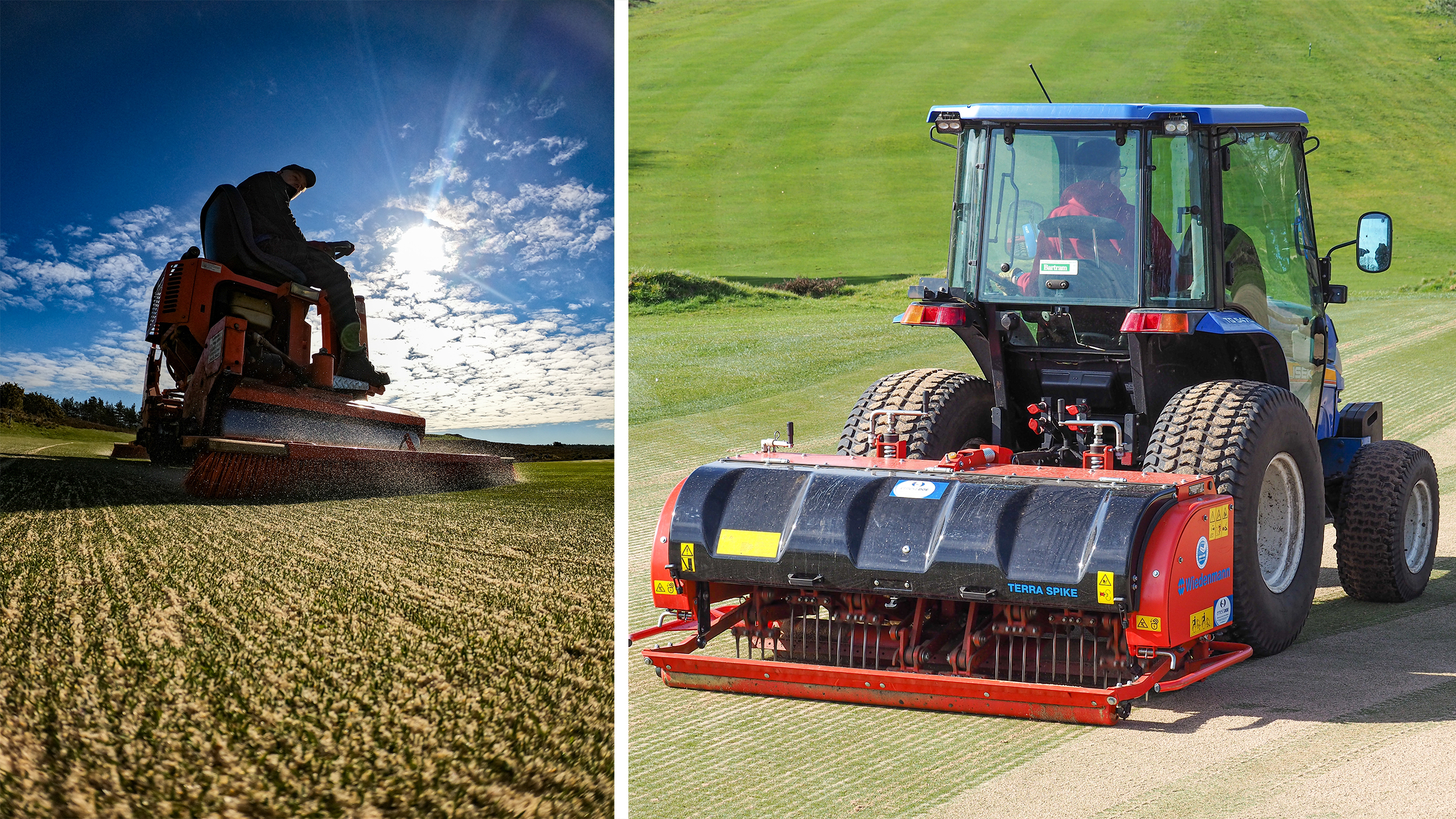Why Do Greenkeepers Sand Greens?
Wallasey Golf Club Course Manager John Mcloughlin explains why greenkeepers sand greens


Golfers love nothing more than a perfectly smooth golf green and may ask why their greens have been covered in sand - so why do greenkepers do this?
It's fairly simple and is all done to enhance the health and playability of the putting surfaces. Sanding on its own can smooth out the greens but it usually comes with hollow tining where a core is plugged out of the green. Sand is then applied to the greens to dilute organic matter below the green canopy, which can promote disease if not managed.
"There’s a couple of reasons," Wallasey GC Course Manager John Mcloughlin tells Golf Monthly on why greenkeepers sand greens. "One is for smoothness, so obviously the sand can take out any imperfections and pitch marks and old scar marks from disease. So it aids as a sort of a blanket to smooth out the greens and it also dilutes organic matter.
"So in golf greens, grass creates a thatch layer through dead and decaying shoots and roots and old fibrous plant material. Greens can become really spongy through excess organic matter and by adding sand within that organic matter layer it dilutes it and is a way of firming up the greens. Although a lot of golfers don't really enjoy the greens when they’re sandy it is a necessity to smooth out the greens and sort of a long term process of ongoing sanding the greens will improve.
"Clubs have maintenance weeks. We have a maintenance week in March where we will target the greens and do some verti-draining and put a lot more sand on in that week. And then we also have a maintenance week in October where we will put more sand on and then through the season we’ll put dustings of sand on.
"We now try and keep the playing season from April to October minimal disruption and we top dress monthly. We'll top dress in the morning and by the time we’ve pushed that in and watered it in, golfers won’t really notice that they’ve been sanded and what we find is a little bit of sand on the greens to putt on, it actually can smooth out the greens.
"It is a necessity if you want to good quality, all round greens. You can either do a heavy top dressing or what we call if we’re not putting lots of sand on, we’d just 'dust' over the greens so it’s still a top dressing but just a light top dressing."
Subscribe to the Golf Monthly newsletter to stay up to date with all the latest tour news, equipment news, reviews, head-to-heads and buyer’s guides from our team of experienced experts.

Elliott Heath is our News Editor and has been with Golf Monthly since early 2016 after graduating with a degree in Sports Journalism. He covered the 2022 and 2025 Masters from Augusta National and was there by the 18th green to watch Rory McIlroy complete the career grand slam. He has also covered five Open Championships on-site including the 150th at St Andrews.